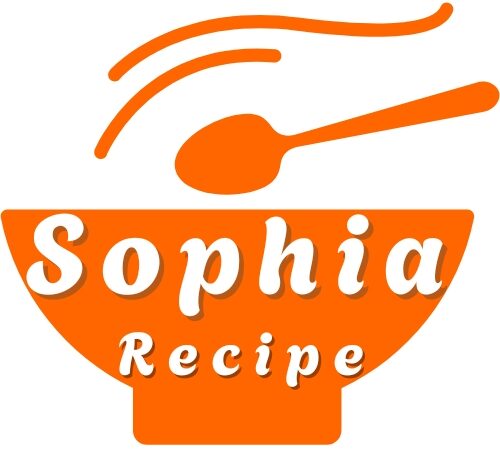Classic Scotch Eggs are a beloved British snack that combines a soft-boiled egg wrapped in seasoned sausage, coated in breadcrumbs, and deep-fried until golden brown. They are perfect as a hearty appetizer, picnic treat, or savory on-the-go snack. The balance of textures—crispy exterior, flavorful sausage, and tender yolk—makes them a standout dish for any occasion.
Full Recipe:
Ingredients
Proteins
-
6 large eggs
-
1 egg (for breading)
Meat
-
1 lb ground pork sausage
Breading
-
1 cup all-purpose flour
-
2 cups panko breadcrumbs
Seasoning
-
1 tsp salt
-
½ tsp black pepper
Oil
-
3 cups vegetable oil
Directions
1. Boil the Eggs
Gently place 6 eggs into a pot of boiling water. Boil for exactly 6 minutes for soft yolks, or up to 8 minutes for firmer centers. Immediately transfer to an ice bath to halt cooking and make peeling easier.
2. Peel the Eggs
Once cooled, carefully peel the eggs. Be gentle to preserve the soft yolk inside.
3. Season the Sausage
In a mixing bowl, combine the ground pork sausage with salt and pepper. Mix thoroughly to evenly distribute the seasoning.
4. Wrap the Eggs
Divide the sausage into six equal portions. Flatten each portion into a patty. Wrap each egg in sausage, ensuring the egg is completely sealed inside.
5. Prepare the Breading Station
Set up three shallow dishes: one with flour, one with a beaten egg, and one with panko breadcrumbs. Roll each sausage-wrapped egg in flour, dip in beaten egg, then coat with panko.
6. Heat the Oil
Heat the vegetable oil in a large pot to 350°F (175°C). Use a thermometer for accuracy.
7. Fry the Scotch Eggs
Carefully lower 2–3 eggs into the hot oil using a slotted spoon. Fry for 5–6 minutes, turning occasionally, until golden brown and sausage is fully cooked (internal temp: 160°F / 71°C). Drain on a wire rack. Repeat with remaining eggs.
8. Serve
Serve warm or at room temperature with your favorite dipping sauce or mustard.
Nutrients (per serving)
-
Calories: ~420
-
Protein: 21g
-
Carbohydrates: 17g
-
Fat: 31g
-
Fiber: 1g
-
Sugar: 1g
-
Sodium: 620mg
A Rich History Rooted in British Cuisine
The origins of the Scotch Egg date back to the 18th century, with Fortnum & Mason, the iconic London department store, often credited for creating the first commercial version. Back then, they were intended as a convenient snack for travelers—a handheld, protein-rich meal perfect for long carriage rides.
Despite its name, the dish is not Scottish in origin. The term “Scotch” in this context refers more to the process of mincing or “scotching” meat rather than the country itself. Over the centuries, variations have emerged in Scotland and beyond, but the classic preparation remains a staple in English delicatessens and countryside picnics.
Texture and Flavor: The Hallmarks of a Good Scotch Egg
A truly well-made Scotch Egg delights the senses from the first bite. The crunchy, golden-brown exterior yields to a juicy layer of seasoned sausage meat, followed by the creamy, tender egg at its core. Each component must be executed with precision to ensure the ultimate mouthfeel and flavor.
Texture plays a key role. The contrast between the crisp breadcrumb coating and the soft-boiled egg is the dish’s defining characteristic. When prepared properly, the yolk remains slightly runny, offering a luxurious counterpoint to the savory sausage and the crunchy exterior.
Flavor-wise, seasoning the meat properly is critical. A good blend of salt and black pepper enhances the pork without overpowering it. Some recipes include herbs like sage or thyme, or a touch of mustard, to add dimension. However, simplicity often reigns supreme in classic versions, allowing each ingredient to shine through on its own merit.
Scotch Eggs as Versatile Crowd-Pleasers
One of the key reasons Scotch Eggs have stood the test of time is their versatility. They serve equally well as a party appetizer, a hearty lunchbox item, or the centerpiece of a picnic spread. Their portable nature and satisfying balance of protein and fat make them a practical choice for meals on the go.
In recent years, chefs have begun to reimagine the Scotch Egg with innovative twists. Some replace the pork sausage with lamb, beef, or even vegetarian options like lentils or chickpeas. Others alter the crust, using crushed cornflakes or spiced coatings for an extra crunch or flavor kick. Even the eggs can be varied—quail eggs for bite-sized versions, or duck eggs for richer yolks.
Despite these modern interpretations, the classic Scotch Egg continues to hold its own. There’s a certain nostalgic charm to biting into a traditionally made Scotch Egg, one that evokes home cooking, hearty meals, and rustic British charm.
The Role of Scotch Eggs in Modern Food Culture
Scotch Eggs have transcended their humble beginnings to become a symbol of classic comfort food. In the UK, they frequently feature in gastropubs, delis, and cafes. Food festivals often host Scotch Egg competitions, with chefs vying for the crispiest crust or the most flavorful meat blend.
Outside the UK, Scotch Eggs have found a following among food enthusiasts looking to explore traditional European dishes. In the United States, for instance, they’re often served in British-style pubs and at brunch spots with gourmet twists—paired with artisanal mustards or even served atop salad bowls.
Social media and food blogs have also played a part in their resurgence. A perfectly made Scotch Egg is highly photogenic: the golden yolk contrasting with the crisp coating makes for irresistible food content. As such, they have become a favorite among food photographers and Instagram influencers.
Perfecting the Cooking Process
While Scotch Eggs might seem simple at first glance, achieving perfection requires a bit of culinary finesse. Timing the boiling of the eggs is crucial, especially if you want a soft, jammy yolk. Wrapping the sausage evenly ensures consistent cooking, and proper sealing prevents the meat from splitting open during frying.
Temperature control is another vital factor. If the oil isn’t hot enough, the coating will absorb too much grease and turn soggy. Too hot, and the crust may burn before the sausage is fully cooked. Using a thermometer can help maintain the ideal frying temperature of 350°F (175°C), ensuring golden-brown results every time.
And while deep-frying remains the traditional cooking method, some opt for baking or air-frying as healthier alternatives. While these methods can’t perfectly replicate the crispness of oil-frying, they still produce delicious results with less mess and fewer calories.
Serving Suggestions and Pairings
Scotch Eggs are highly adaptable when it comes to serving options. They’re delightful straight out of the fryer, when the contrast of temperatures and textures is most pronounced. However, they also shine at room temperature, making them a practical choice for events or casual meals.
Pairing Scotch Eggs with dipping sauces enhances the experience further. Classic English mustard is a timeless choice, its sharpness balancing the richness of the sausage. Some enjoy tangy ketchup, aioli, or even a spicy sriracha mayo for a more contemporary twist.
On the side, consider fresh greens, pickled vegetables, or a light potato salad. These accompaniments can cut through the richness of the egg and sausage, offering a refreshing counterpoint. For drinks, Scotch Eggs pair well with crisp ales, dry ciders, or even sparkling wine for a touch of elegance.
Cultural Significance and Lasting Popularity
The Scotch Egg is more than just a snack; it’s a cultural artifact that represents generations of tradition, practicality, and innovation. It embodies the resourcefulness of classic British cooking—maximizing flavor, minimizing waste, and celebrating wholesome ingredients.
Over the decades, its appeal has expanded far beyond the British Isles, earning its place in the global culinary canon. Whether served at an upscale brunch or a family picnic, it never fails to impress with its comforting familiarity and satisfying taste.
As new dietary preferences and culinary techniques evolve, the Scotch Egg continues to adapt. Vegetarian and vegan versions are increasingly available, and international spices and seasonings have found their way into modern variations. Yet, no matter how it’s reimagined, the soul of the Scotch Egg remains unchanged—a delicious union of egg, meat, and crunch.
Conclusion
Classic Scotch Eggs are a timeless dish that masterfully balances texture, flavor, and nostalgia. From their historic roots as travel-ready fare to their modern-day role as gourmet comfort food, they continue to satisfy both traditionalists and adventurous eaters alike. Their enduring popularity lies in their versatility, portability, and sheer deliciousness. Whether enjoyed at a picnic, a pub, or your own kitchen table, Scotch Eggs offer a truly comforting and hearty experience that never goes out of style.






